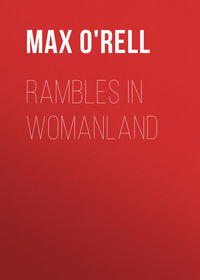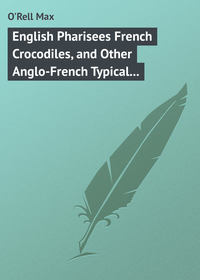 полная версия
полная версияFriend Mac Donald
On the first floor we enter the picture gallery. It is here that the Scotch peers are elected. The room contains portraits of the Scottish kings, from Fergus I. to James VII. At the end of it we find a door which leads to the apartments occupied by the unfortunate princess. Small windows throw a feeble light on the sombre tapestries; though the day is fine, it is difficult to distinguish the various objects of furniture. There is an air of mystery about the place. Poor Mary! After the gay French court, what a tomb must this palace have seemed! Between two windows is a little mirror that must often have reflected back the image of that beautiful countenance, stamped with sadness, the fair head that was one day to roll at the feet of the executioner. Close by, a portrait which must be a libel on so gracious an original. At the two extremities of the bedroom two little closets – I had almost said, cells – formed in the towers which overhang from the outside. The one on the left is the dressing-room; that on the right the supper-room. Near the latter a door leads to the secret staircase. You can reconstruct for yourself the scene of the murder of the favourite Italian secretary, who paid with his blood for the honour of having now and then cheered the heart of the queen with his songs. On the floor of the audience-room you are shown the stains of the unhappy Rizzio's blood. It was here, too, that Chastelard, grandson of Bayard, declared his love to his royal mistress, whom he had accompanied to Scotland on her departure from the French court. Poor Chastelard! he, too, payed with his life for the love which the enchantress had inspired in him, not for this first declaration, which was forgiven him, but for a graver offence, committed at Rossend Castle, of which I shall have occasion to speak presently.
A visit to Holyrood always leaves a painful impression. It is the temple of misfortune, and I can understand Queen Victoria's preference for the bright breezy Highlands.
On our return through Canongate and High Street, we shall come to the Castle. Without going much out of our way, we can go and see the Parliament House and the University; but first, let us go to the summit of Arthur's Seat, a hill eight hundred and twenty-two feet high, situated behind the Palace of Holyrood. The ascent is not difficult, and the magnificence of the panorama that meets the eyes is beyond description.
The House where the Scotch Parliament met before the union of the Scotch and English Crowns, is now transformed into Courts of Law. This building is interesting not only on account of the souvenirs it evokes, but also on account of the hopes it keeps alive in the hearts of the Scotch. Before many years have elapsed, the representatives of Scotland will probably sit there to manage the local affairs of the nation.
Edinburgh University, which dates from the year 1582, is the finest edifice of the kind in Europe: two hundred and fifty-five feet long, by three hundred and fifty-eight broad. A library of one hundred and fifty thousand volumes (sixpence entrance). Rare manuscripts. Magnificent lecture rooms. Over three thousand students work under most eminent professors.
Facing the University is the Museum of Arts and Science. For a list of the innumerable treasures it contains, I must refer the reader to guides to Scotland.
The Royal Infirmary, with its numerous buildings, in the midst of which rises a tower thirty-three feet high, arrests our attention a few moments. From here we can turn down High Street to admire the Cathedral of Saint Giles, so full of souvenirs of the Reformation, and then continue our course up the great street of the old city, as far as the famous Edinburgh Castle, a feudal edifice standing on the summit of a perpendicular rock, from whence you can survey the old and new towns.
The Crown Room contains the insignia of the Scottish sovereigns. Close to it is the room where Mary Stuart gave birth to the son who was to unite the crowns of England and Scotland. In this rapid glimpse of Edinburgh, it would be out of place to enter into all the history of the Castle, the sieges it has stood, and so on. Historical castles all resemble each other a little; but that which makes the interest of this one unique is its marvellous position: the sixteenth century at your right; the hills and the sea beyond; on your left, the parks; in front, nearly four hundred feet below you, the beautiful modern town, with its elegant buildings, straight, wide streets, and its statues; a little in the distance, Calton Hill, with its Greek monuments; beyond again, Leith with its harbour bristling with masts; you are chained to the spot in admiration.
Following the castle terrace, we will descend towards the new town, and come out at the west of Princes Street.
We are walking towards the East. On our left, we shall have the shops; on our right, the public gardens, a mixture of Boulevard des Italiens and Champs Elysées. Everything here is in perfect taste. Look at the statues judiciously placed about the public gardens, streets, and squares!
O George Square!
Here is a shop-window full of photographs. Let us stop and look in: they are not portraits of actresses and fashionable beauties, but chiefly of professors of the University, of which Edinburgh is so proud. Remarkable among them is Professor Blackie, his fine head recalling a likeness of Lizst. It was this same Professor Blackie on whom the people of Glasgow made such an attack about two years ago, for having given, one Sunday in Saint Andrew's Hall, a most charming and poetical discourse on the Songs of Scotland.
The sweep of the public gardens on the right is agreeably broken by two specimens of the most elegant Greek architecture: they are the buildings of the Royal Institution and the National Gallery. Nothing could be more graceful, more Attic, than these twin structures. The first contains thousands of national relics, from the pulpit of Knox to the Ribbon of the Garter worn by Prince Charles Stuart. The second is an admirable museum of painting and sculpture.
The most striking monument of Princes Street is the one which was erected to Walter Scott in 1844. It has the form of a Gothic steeple, and is not less than two hundred feet high. It resembles somewhat the Albert Memorial in Hyde Park, but with this difference, that, while designed with ten times as much taste, it cost about a tenth of the money. The novelist's heroes and heroines are gracefully placed in the niches; the author himself is seated in an attitude of contemplation in the midst of his creations. Now for the comic side of the thing. A staircase conducts to the summit of the monument, to which you may mount for the sum of twopence.
On the East of Princes Street are two very fine buildings – the Post Office and the Register Office, or resting-place of the national archives. This latter building has a magnificent flight of steps, in front of which is an equestrian statue – you guess whose, of course: the inevitable, the eternal, the never-to-be-sufficiently-paraded.
What a bore that creature is!
I am quite willing to admit that Wellington did exist, and that he rendered his country service; but is that a reason for turning him into a bore? He is a very nightmare!
Napoleon, surely, was as great a general as Wellington. We have placed him on the top of the Vendome Column, but we had the good taste not to stick him up in every provincial city.
That is true, you will perhaps say; but Wellington saved his country, whereas Napoleon ruined his. That is not my opinion; but we will not argue.
Joan of Arc saved France. We have her statue at Domrémy, where she was born; at Orleans, where she handed over to her king his kingdom; and at Rouen, where she suffered death.
I should understand every Scotch town having a statue of Burns, and another of Scott. These two geniuses personify Scotland; they remind the Scotch that Scotland is a nation, with a literature of her own; they keep up patriotism in every heart. But what did Wellington do for Scotland? If, in 1840, for instance, the Scotch had asked the English to give them their national rights and their parliament, Wellington is probably the general who would have gone to reduce them to order.
But let us say no more about it. We will continue our walk to the end of Princes Street. Here we are at the foot of Calton Hill. By means of flights of steps and paths we pass the Observatory, and reach the top, to see the monument erected to Nelson's memory (threepence entrance).
Between this monument and the Observatory, there stands a reproduction of the Parthenon. This is what chiefly suggested the idea of calling Edinburgh the Athens of the North. Calton Hill does its best to play the part of the Acropolis. But, unhappily, this Parthenon, built to commemorate the victory of Waterloo, remains unfinished for want of funds. It is true that this lends it a ruined look, which does not give a bad effect to the scene. But £20,000 to make a ruin is dear. In that time the Greeks would have sold the Scots the real Parthenon for half the money. Half the money! What am I talking about? for a timepiece. Go to the British Museum and see what Lord Elgin got for a clock: the marbles and frieze of the Parthenon, the bas-reliefs of Phidias, columns from the temple of Diana at Ephesus, the epitaph of the Athenians who died at Potidœa, the bas-reliefs of the temple of Ægina. Lord Elgin was a business-like Scotchman. In 1816 the English bought his collection of him for £36,000. They would not sell it to-day for £500,000.
Going round the Acropolis we will descend near the High School, the most important school in Edinburgh, opposite which stands the monument to Robert Burns (twopence entrance). It is rather insignificant-looking, and reminds one of that erected by the Athenians in memory of Lysicrates. Cost, £2,600.
I pass over many museums and institutions; but I hope I have succeeded in showing that Edinburgh is a place to be seen, and quite repays one for the trouble of a long journey.
And now let us see what kind of people one meets in the streets of Edinburgh. After that, I will ask your permission to take you across the Firth of Forth, and show you a castle little known in England, where I hope we shall be able to pass a little time pleasantly.
CHAPTER XXVIII
Where are the Scotch? – Something wanting in the Landscape. – The Inhabitants. – The Highlanders and the Servant Girls. – Evening in Princes Street. – Leith and the Firth of Forth. – Rossend Castle at Burntisland. – Mary Stuart once more. – I receive Scotch Hospitality in the Bedroom where Chastelard was as enterprising as unfortunate.
With the exception of the famous tartan shawls, which we come across again in Edinburgh on the backs of the lower-class women, nothing in the costume of the inhabitants could remind you that you were not in Paris, London, Brussels, or any other haunt of that badge of modern civilisation, the chimney-pot. In Glasgow this does not shock you more than it would in Manchester or Birmingham; but, in the romantic city of Edinburgh, even the whistle of the railway engine annoys you; the cap and kilt are sadly felt wanting, and you almost want to stop the passers-by and ask them: "Where are your kilts?" You feel as if you were cheated out of something.
Alas! the national costume of the Scotch is almost a thing of the past: it is no longer a dress – it is a get-up.
You may see it yet at fancy dress balls, in the army of Her Britannic Majesty, at the Paris Opera-Comique, and in the comic papers.
I believe the Royal Princes occasionally don it, when they go to Scotland in the autumn to shoot; but even in the remote Highlands the national costume is dying out, and if you count upon seeing Scotchmen, dressed Scotch fashion in Scotland, you will be disappointed. As well look for lions in the outskirts of Algiers, or a pretty woman in the streets of Berne.
A gentleman in kilts would make as great a sensation in the streets of Edinburgh as he would on the Boulevard des Italiens. Nay, more, if he stood still, he might have pence offered him.
The costume of Dickson in La Dame Blanche is only seen on the backs of those splendid Highlanders whom the maidservants in large towns hire by the afternoon on Sundays to accompany them to the parks.
In London you will sometimes see Highlanders – from Whitechapel – playing the bagpipes and dancing reels, talents which bring an ample harvest of pennies in populous neighbourhoods, but which would fall rather flat in Edinburgh.
I cannot imagine anything much more picturesque than Princes Street at night, when the old city in amphitheatre-shape, on the other side of the valley, stands out from the sky which it seems to touch with its old sombre majestic castle, and its houses ten or twelve stories high, rising tier above tier up the side of the hill, and shining with a thousand lights. I can understand that the inhabitants of Edinburgh enjoy to come out in the evening and feast their eyes on the enchanting sight, and this even in winter, when the street is a very funnel for the east wind which blows across straight from the Scandinavian icebergs.
Edinburgh is the only town in Great Britain, which I have visited, whose streets are not shunned by respectable people at night.
A fine road about two miles long leads to Leith, which stands for Piræus to the Scotch Athens. There, in the mud and smoke, dwells a population of sixty thousand toil-stained folk, who contrast strongly with their elegant neighbours of Edinburgh. There is nothing here to attract the eye of the traveller, unless it be the harbour with its two piers – one 3,530, the other 3,123 feet long – where the inhabitants can go and breathe the sea air, away from the noise and smoke of the town.
Along the coast to the west, two miles from Leith, we come upon the interesting village of Newhaven. Here we find a little world apart, composed of fisherfolk, all related one to another, it is said. They treat as Philistines all who did not first see the light in their sanctuary, and the result is that they are constantly intermarrying. All the men work at fishing. The women go to Edinburgh to sell what their husbands catch, and bring back empty baskets and full pockets. These worthy women would think they were robbing their dear village if they bought the least thing in Edinburgh. Needless to say, the little community prospers. To see the costume of the women, who, in no point imitate the ridiculous get-up of their sisters in great towns; to see the activity and zeal for their work, one would believe oneself in France.
"All the skippers own their own boats, and the pretty little houses they live in," said the Scotchman who accompanied me.
And how neat and clean they look, those little white houses covered with climbing plants of all sorts! The whole scene speaks loudly of the work, thrift, and order of the people.
By pushing on two miles further we come to Granton. There we can take the boat which will carry us over the Firth of Forth, and set us down at Burntisland in Fifeshire; but instead of there taking the train to the north of Scotland, we will stop to see Rossend Castle.
Standing on a promontory, which dominates the Firth of Forth and the hills of Edinburgh, Rossend Castle is one of the most romantic places in Scotland.
Its old square tower contains the bedroom used by Mary Stuart when she travelled in Fifeshire, and stopped at the castle. The present owner, whose hospitality is proverbial in the neighbourhood, has religiously preserved the room intact. It is there just as it existed three hundred years ago, with its two little turret-rooms, oak wainscoting, and a thousand relics of its unhappy visitor.
The portrait of Mary Stuart at Rossend is the most striking that I saw in Scotland. Placed over the mantelpiece, it seems to fill the room with its dreamy melancholy gaze. It seems to follow you, and you cannot take your eyes off it. I occupied this room for four nights, a prey to the saddest thoughts. It was in the month of January, and the wind, which was blowing hard across the Firth, roared round the tower. With my feet before the fire, which burned in the immense fireplace, I let my fancy reconstruct the scene in which poor Chastelard lost his head, first figuratively, and then in reality.
As I mentioned in the preceding chapter, my young and handsome countryman Pierre de Boscosel de Chastelard had conceived a mad passion for the queen. He had dared to declare this love in the Holyrood Palace. His offence was forgiven.
Imagining, from the fact of his having been pardoned, that he had succeeded in inspiring affection in the heart of his royal mistress, the poor moth must needs flutter again around the flame, which was to be his destruction. The romantic troubadour secretly followed the queen from Edinburgh to Rossend Castle, and, on the night of the 14th of February, 1562, hid himself in her chamber, until she was almost undressed for the night, when he left his hiding-place, and, seizing the queen in his arms, so alarmed her, that she screamed for protection. This woman who, to avenge Rizzio's death, did not hesitate to have a barrel of powder placed under her husband's bed, felt herself insulted. Her cries attracted her attendants, and Murray was ordered by the indignant queen to stab the young madman dead then and there. But Murray preferred to wreak his wrath on Chastelard, whom he hated, by having him hanged. The poor secretary, who had been so favoured by his mistress that all the courtiers were jealous of him, who had so often beguiled her solitude by his poems and his music, went cheerfully to the scaffold. Like Cornelius de Witt, who, a century later, recited Horace's Justum et tenacem while the executioner of The Hague put him to the torture, Chastelard mounted the scaffold calm and smiling, reciting Rousard's Ode to Love.
"I die not without reproach, like my ancestor Bayard," said he; "but, like him, I die without fear."
And then, turning his eyes towards the castle inhabited by Mary Stuart, he cried:
"Adieu, thou cruel but beautiful one, who killest me, but whom I cannot cease to love!"
Rossend Castle is a veritable poem in stone. Do not visit Edinburgh without pushing to Burntisland. The châtelain is justly proud of his romantic home, and does the honours of it with a kind grace that charms the visitor.
CHAPTER XXIX
Aberdeen, the Granite City. – No sign of the Statue of "you know whom." – All Grey. – The Town and its Suburbs. – Character of the Aberdonian. – Why London could not give an Ovation to a Provost of Aberdeen. – Blue Hill. – Aberdeen Society. – A thoughtful Caretaker. – To this Aberdonian's Disappointment, I do not appear in Tights before the Aberdeen Public.
It does not enter into the plan of this book to give a detailed description of the principal towns and sites in Scotland. That can be found in any guide-book.
The aim of this little volume is to give an idea of the character and customs of the Scotch, from Souvenirs of several visits made by the author to the land of Burns and Scott.
But a few words must be said on the subject of the City of Granite.
Aberdeen is a large, clean-looking town, with more than a hundred thousand inhabitants; wide, regular streets, fine edifices, and many statues, among which we are happy, for a change, not to find that of you know whom.
If Glasgow and Dundee are the principal centres of commercial activity in Scotland, Edinburgh and Aberdeen are the two great centres of learning.
Union Street, the principal thoroughfare, is about half-a-mile long, and is built entirely of light grey granite, which gives it a rather monotonous aspect. Public buildings, churches, private houses, pavements, all are grey; the inhabitants are mostly dressed in grey, and look where you will, you seem to see nothing but grey.
Just as it is in London, Edinburgh, and Glasgow, the fashionable quarter is the west, and the poor live in the east.
Is this due to chance?
The most conspicuous edifice of the town is the Municipal Building, forming a town hall and a court of justice. The most interesting is Marischal College, the home of the Faculty and School of Medicine, which now form part of the University of Aberdeen, after having had a separate existence for two hundred and sixty-six years. The college is a very fine building, but is unfortunately hemmed in by a number of other buildings which hide its façade.
A mile from the town stands the college of the university (King's College), built in 1495 on the model of the Paris university. Most of the Scotch buildings, which date from the fifteenth and sixteenth centuries, have a very pronounced French character.
I would advise tourists, who go as far north as Aberdeen, not to miss making the ascension of the Blue Hill, which is about four miles from the town. From the summit of this hill, they will see a delightful panorama of Aberdeen, a stretch of fifty or sixty miles of coast, the ruins of the celebrated castle of Dunnottar, and all the valley of the Dee framed in hills. It is a grand sight; unfortunately, to thoroughly bring out its beauties, a clear sky is essential, and there comes the rub.
The county of Aberdeen is not only one of the great intellectual centres of Scotland, it is the home of Caledonian shrewdness and pawkiness. Aberdeenshire alone furnished more than half the anecdotes collected by Dean Ramsay.
The Aberdonians are the chosen people, the elect of God.
Every Scot is proud of his nationality, but an Aberdonian will tell you: "Not only am I a Scotchman, but I was born in Aberdeen."
And true enough, "tak' awa' Aberdeen, and twal' miles round, and faar are ye?"
It is related that a provost of Aberdeen, having come to London with his wife, someone recommended the lady to be sure and go to Covent Garden to see the opera.
"No," she replied, "we have come to London to be quiet and not to receive ovations. We shall not show ourselves in public during our stay in the capital."
Her resolution was adhered to, and London saw them not.
For the future life, the Aberdonian has no fears, and if he will only recommend you to Saint Peter, you will not have to wait long at the gates of Paradise.
Society in Aberdeen is of the choicest. Its aristocracy is an aristocracy of talent. In Aberdeen, as in Edinburgh, the local lions are the professors of the university, literary people, doctors, barristers, and artists. To cut a figure there, you need not jingle your guineas, but only show your brains and good manners. In Glasgow, show your savoir-faire; but, in Edinburgh and Aberdeen, your savoir-vivre.
I cannot quit the subject of Aberdeen without relating a little incident which exceedingly diverted me.
A few hours before delivering a lecture at the Albert Hall, I paid a visit to the place to see if my reading-desk had been properly arranged. Great was my surprise, on entering the hall, to see near the platform an elegant improvised green-room, curtained off. I asked the caretaker if there was not a retiring-room, in which I could await the moment for beginning my lecture, to which he replied:
"Yes, sir; we have an anteroom over there, but I have set apart this little green-room, because I thought it would be more comfortable for you to go and change your dresses in during the performance."
The worthy fellow evidently imagined that I was going to appear in tights before the lairds of Aberdeen.
The learned professor, who had kindly come to introduce me to my audience, laughed heartily with me over the joke.
CHAPTER XXX
The Thistle. – "Nemo me impune lacessit." – "Honi soit qui Mollet pince." – Political Aspirations of the Scotch. – Signification of Liberalism in Scotland. – Self-Government in the near Future. – Coercive Pills. – The Disunited Kingdom. – The United Empire.
The emblem of Scotland is the thistle, the device Nemo me impune lacessit.
The great Order of Scotland is that of the Thistle, or Saint Andrew, the patron saint of the country, and was instituted by James V. in 1534 – that is to say, about two hundred years after Edward III. of England had founded the Order of the Garter.
A propos of this Garter, what fables and anecdotes have been written! Historians even are not agreed as to the origin of the famous device: Honi soit qui mal y pense.







